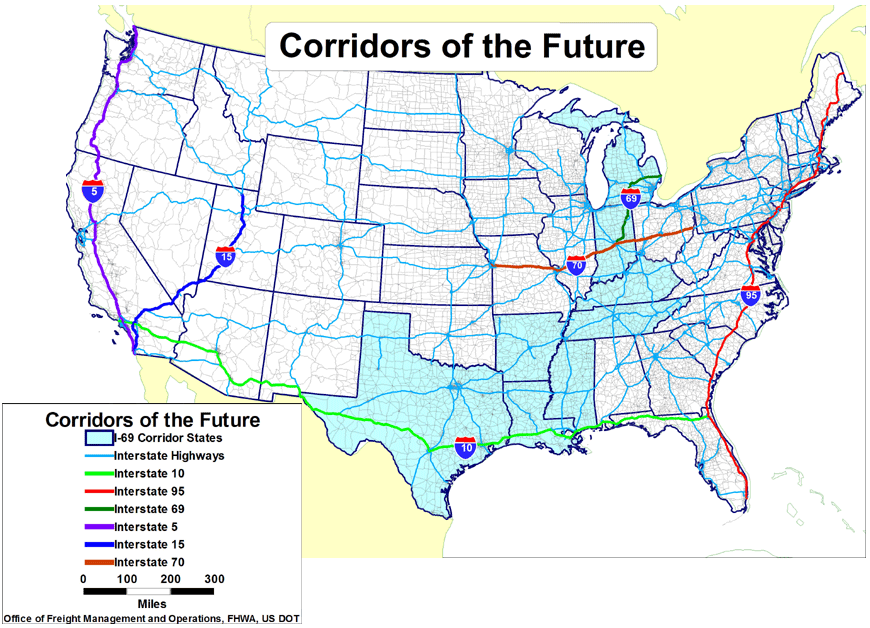We applaud Senator Kay Bailey Hutchison for attempting to begin the long process of reining-in our rogue state agency, TxDOT, with an amendment added to an appropriations bill to ban tolling existing interstates. But the news of this amendment appeared in the press the same day Hutchison and Senator John Cornyn cast a controversial vote in support of Mexican trucks beating up our State’s highway system and putting our air quality (teetering at non-attainment in all of our urban areas already) at risk.
And that doesn’t even tackle the national security and jobs controversy swirling around the pilot Mexican trucking program. With Cornyn also feeling the political heat, he came out on Dallas TV Friday saying he’s against tolling I-35. Is this an attempt to shore-up the angry public with a politically popular position against DOUBLE TAXING drivers to use our existing interstates? (Read the pro-tollers’ take on it here).
Let’s look at the bill to find out. This amendment does little overall to stop any current toll projects in the works throughout Texas. The State can still bulldoze our existing interstates to their heart’s content and re-arrange the pavement to make way for toll lanes down the middle. They call them “new lanes” but they’re using our existing right of way already paid for with gas taxes. So it’s still a DOUBLE TAX. The State can also continue to toll existing STATE highways, all or in part, unabated event though they, too, were built with federal dollars.
TxDOT TRICKERY TO MAXIMIZE REVENUE, GUARANTEE SLUGGISH “FREE” LANES
Consider TxDOT’s tricks to replace “existing lanes” with frontage roads or to narrow the width of the existing lanes (after they destroy them, then re-build them, taking twice the construction time as a freeway at more than double the cost), it will narrow the free lanes to slow down or manipulate traffic in such a way as to maximize the number of people on the tollway. Or they’ll outright steal the entire existing freeway tolling all the expressway lanes like they plan to do on US 281, making second class citizens out of those who cannot afford tolls by relegating them to frontage roads.
So it begs the question, if politicians fell all over themselves to be the first to repudiate tolling existing interstates (like Texas State Senator John Carona, State Representative Lois Kolkhorst, Bexar County Judge Nelson Wolff, San Antonio Councilwoman Sheila McNeil), then why won’t they stop TxDOT and the tolling entities from tolling ALL existing highways?
TOUGH TALK, NO ACTION
The people of Texas are tired of tough talk and no action. They’re tired of politicians playing games with the plain meaning of words. TxDOT is tolling EXISTING STATE HIGHWAYS and rights of way, which is no different than tolling existing interstates, which they claim to object to. So why don’t we stop the tomfoolery and end this. If they want to build toll roads, make them completely NEW roads, but stop tolling our existing corridors (whether federal or state highways).
So this amendment is a start, but doesn’t come close to addressing the fundamental concerns of taxpayers outraged by what’s happening in this state. On the flip side, after Hutchison and Cornyn (and Congressmen Charlie Gonzalez and Ciro Rodriguez for introducing a permanent ban in the House) kicked Ric Williamson’s teeth in with a public spanking, Williamson showed his usual arrogance by thanking Hutchison for likely hastening the addition of toll lanes to our existing roads since her amendment didn’t prohibit it and took away one of their tools in the infamous “toolbox” by prohibiting buying back segments of interstates in order to toll ALL existing lanes.
OTHER SOLUTIONS IGNORED
When the Texas A&M Study says we don’t need a SINGLE toll road in Texas to meet our future transportation needs, it’s confounding that some politicians either pander or press ahead over the people’s objections. In any case, if ANY of these politicians want to curry favor with an incensed public, we need to see a REAL bill become LAW and FAST that puts a PERMANENT stop to tolling existing corridors in ALL of TxDOT’s machinations of them.
Overall, the privatization of our public infrastructure is far from over. The U.S. Department of Transportation just announced it will spend $66 million in YOUR GAS TAXES to attract private partners for several tolled trade corridors, many of which happen to be existing or future interstates. Notice they’re not spending the little gas tax money they claim to not have to actually build badly needed roads, rather your hard earned cash will be used to jet set bureaucrats to Europe seeking someone to foot the bill for America’s second mortgage on its highway system. Interstate10 from CA to FL and I-69 from TX to Michigan are eligible to become privately financed, tolled trade corridors called “corridors of the future.” Ominously resembles the NAFTA superhighways Bush and Perry are so fond of denying. If it looks like a duck…
The battle against unbridled toll taxation is not over either, and Senator Hutchison vows to continue to fight this DOUBLE TAXATION in its many forms. We surely hope so, but after getting repeatedly burned by the Texas Legislature, we’ll trust but verify!




